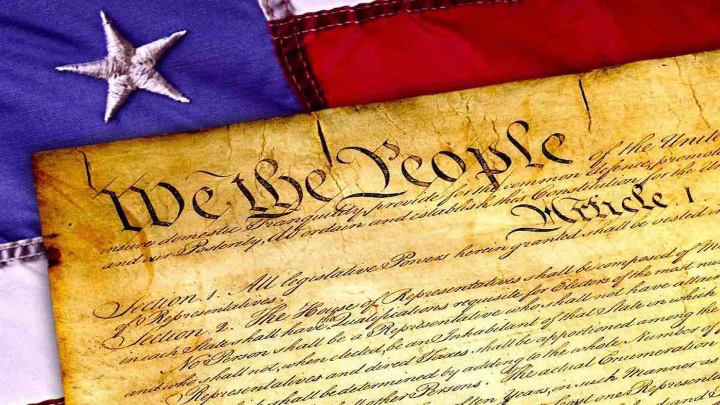Exploring 10 oldest constitutions of the world
TBS || Shining BD
Constitutions, the bedrock of nations, outline fundamental principles, governmental powers, and citizen rights. While some have endured for centuries, others have been forged in the crucible of conflict. A Times of India report explored the top 10 oldest constitutions that remain influential in shaping their nations, serving as enduring symbols of adaptability and resilience.
Here are the 10 oldest constitutions of the world:
Canada
The cornerstone of Canada's legal framework, the Constitution Act of 1867, was initially enacted as the British North America Act. This pivotal legislation marked the country's birth, uniting British colonies in North America into a single self-governing entity. While Canada remains a member of the British Commonwealth, its constitution blends the Westminster system with federalism. The original document, establishing courts, legislatures, and a senate, continues to shape the nation's governance.

Denmark
Denmark has a system of constitutional monarchy, with the monarch serving as the ceremonial head of the country. This came into effect with the 1849 Constitutional Act of the Kingdom of Denmark, which ended absolute monarchy and limited the powers of the monarch. King Christian VIII, before his death, asked his son Frederik VII to bring in a constitution that would ensure equality for all. Since its inception, the constitution has been amended only five times, with the latest in 1952. Currently, the constitution has 11 chapters and 89 sections.

Switzerland
The Swiss constitution first came into being in 1848, and Switzerland established itself as a representative democracy. The original constitution, heavily influenced by the U.S. Constitution and the French Revolution, was amended in 1866 and fully revised in 1874. The final amendments came in the 1990s and were approved in 1999, including articles on fundamental rights and the removal of some provisions.

Luxemborg
Until 1839, Luxembourg was a province of Belgium, but with the Treaty of London, it became a sovereign state. Two years later, the country had a constitutional framework in place. The current constitution, however, dates back to 1968. It was influenced by the Belgian Constitution of 1838. It consists of 121 articles divided into 13 chapters. Luxembourg has an old form of constitutional monarchy, and it is currently undergoing major constitutional changes; most of the powers for such are vested in the parliament.

Belgium
The first constitution of Belgium was influenced by the French, English, and Dutch constitutions. It was approved in 1831 and has been a parliamentary monarchy since. The current constitution still includes some of the original provisions, like equality before the law, freedom of expression, freedom of religion, and freedom of education and the press. They aim to follow what is known as "dissociative feminism."

Kingdom of Netherlands
The constitution of the Kingdom of the Netherlands dates back to 1815, and in 1848, it became a constitutional monarchy. The monarch is the head of state. The current government consists of the King, the Prime Minister, and the ministers. While the ministers can be forced to abdicate, the same cannot be done with the king. The country also has another book, known as the Charter for the Kingdom of the Netherlands, which defines the role, characteristics, and relationship of the four states constituting the kingdom.

Norway
Norway adopted its first constitution in 1814 to prevent being taken over by Sweden after the defeat of Norway-Denmark in the Napoleonic wars. The constitution established Norway as a sovereign kingdom. Although Sweden eventually seized Norway, it had to accept the Norwegian Constitution. The Union with Sweden was dissolved in 1905, and Prince Carl became the first monarch of independent Norway.

Republic of Poland
The constitution of Poland is considered the second oldest in the world by many, as parts of San Marino's constitution are not codified. Poland adopted its first written constitution in 1791. The original constitution, which upheld the supremacy of Catholicism, lasted only for a year. In 1815, the Kingdom of Poland came under the Russian Empire and adopted a new constitution. Only after World War I, in 1921, did Poland become an independent nation and adopt a new constitution, heavily influenced by the French Constitution of 1875.

United States
On 17 September 1787, a total of 39 delegates appointed by state legislatures signed the US Constitution. The constitution was ratified by the states between 1787 and 1788, with Delaware being the first and Rhode Island being the last. Since then, the US Constitution has been amended 27 times. The first amendments were proposed by James Madison. Out of 12 proposed, 10 were accepted by Congress and collectively became known as the United States Bill of Rights.

San Marino
San Marino's constitution is the oldest constitution whose history can be traced back to the 1600s. The country is also the oldest constitutional republic in the world, founded by Marinus in 301. The constitution is uncodified, meaning it is not a single document but is made up of multiple documents.

Shining BD
























